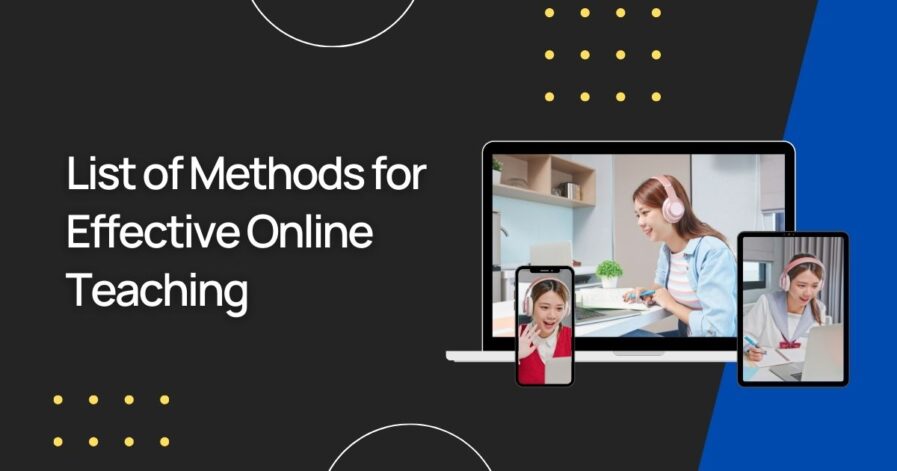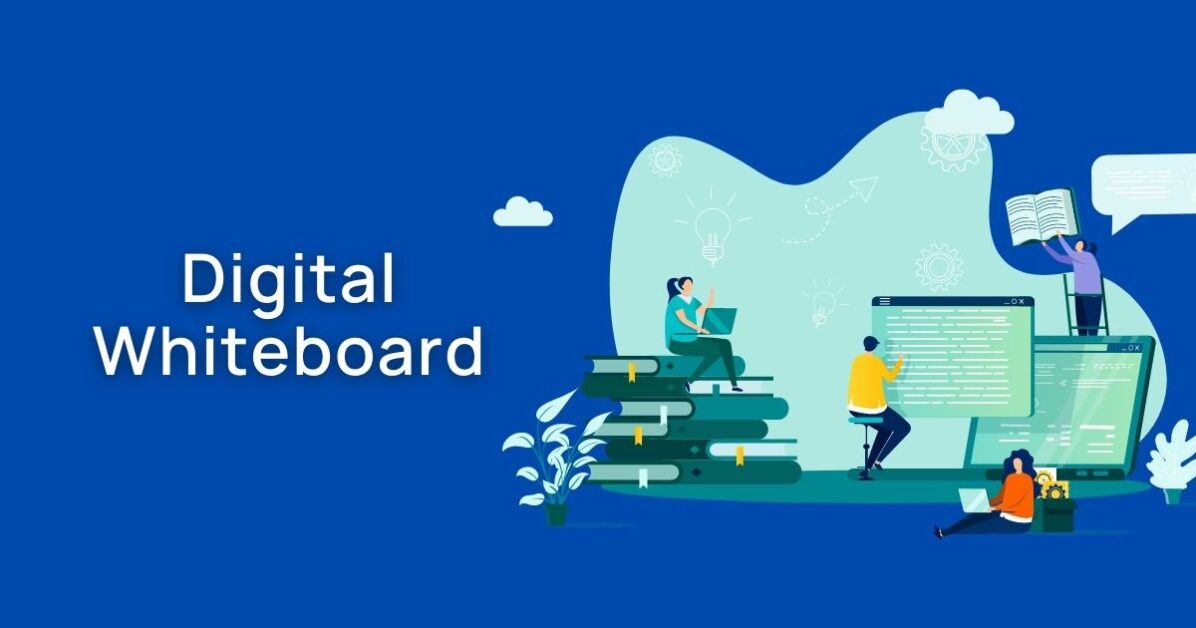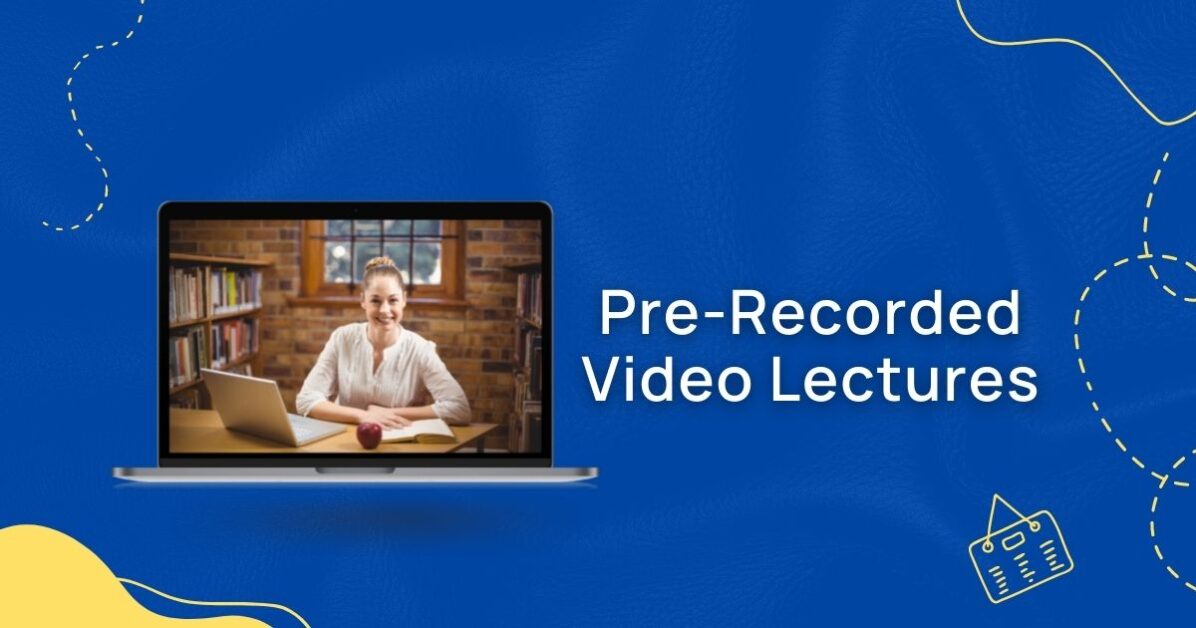
List of Methods for Effective Online Teaching
Overview
The technological advancements in the past few years have revolutionized how methods of teaching are conducted around the world. Even in traditional classrooms, technology has played a more prominent role in new methods of teaching and online learning. There are many teaching methods, and they can all be applied equally effectively to online teaching. However, the teaching method varies depending on your teaching philosophy, your objectives, your subject area, and the demographics of your classroom.
The pandemic has forced all educational institutions worldwide to adopt online educational methods to catch up with lost time and complete the academic requirements of students. Although it may have come as a boon, it has its own set of problems.
The result of this sudden and extreme disciplinary change, it requires ad hoc planning and execution of changes at all levels, starting from the very first day. It takes a fresh start at every stage, from teaching methods to implementing technology and other elements that contribute to the success of virtual classroom sessions.
Although certain methods and rules might work well for the majority of students and teachers, it isn’t a hard and fast rule that whatever works for one must work for another. It all depends on the subject you are teaching and of course on your students. Processes and methods have their own advantages and disadvantages.
Online Teaching Methods
We have listed some of the most popular online teaching methods below.
Experiment with graphical presentations
Like physical classrooms, presentations are one of the most common and most effective ways to convey a message online. In addition to lectures, creative visuals and slides will help students retain the information on the topic presented much better. In addition, this technique is particularly beneficial for visual learners who will be far more influenced by the presentation than if the instructor simply relays information from a textbook.
Digital Whiteboard
Written thoughts are always more effective than spoken words. If lectures are only verbal, there is a possibility that students will miss important points. The popularity of online whiteboards has grown as a way to simulate intangible learning experiences between students and teachers.

These whiteboards also have the advantage of allowing you to digitize the content you create so that you can refer to it later. You get unlimited canvas sizes, a library of shapes to create different diagrams and charts, pre-made templates, sketching, typing, and image importing features.
Moreover, students can collaborate with each other in real-time on the same canvas, which facilitates
- Assignments
- Brainstorm around lessons
- Mind mapping
- Do interactive exercises such as quizzes
- Review homework and leave feedback
Take live online classes
The only synchronous method that facilitates two-way communication in real-time is through this method. Thus, you will be able to add a personal touch to all your classes, regardless of whether you are physically present. Now that technology has taken hold, it is possible to deliver lessons online, even without being physically present with students, thus replicating many of the elements of face-to-face interaction. When you teach live virtual classes, you are not only able to keep an eye on your students while you are teaching, but you are also able to measure their progress to ensure progress is on track.
For this, students should be kept engaged during the online class,
- Prepare yourself by preparing a lesson outline
- Questions should be asked both during and after the lesson, and students should be given time to respond
- Engage students in discussions about the topic and encourage them to participate actively
- Organize your work using graphic organizers, images, posters, videos, and visuals. ‘
Pre-Recorded Video Lectures
Instead of Live lectures, pre-recorded sessions offer the advantages of allowing students to progress at their own pace and take notes at any time. Pre-recorded lectures also give the students material to rehearse during revision.

By using videos, the instructor or teacher also avoids repetitive teaching between the different classes.
In order to record effective prerecorded lectures;
- You should start by writing a script and outlining what should be included on every slide.
- As an additional precaution, rehearse the speech before recording it unless you are confident enough to do so in one go.
- When creating a long video, consider breaking it up into smaller videos. This will come in handy when uploading them online, as well as when updating the content with new information. A minute-long video will be easier to update than an hour-long one.
- Prior to recording, be sure that your script and props are in order and that you are in a place without distracting noises.
- If you are recording your screen, close tabs, and apps that send you notifications so that you are not interrupted.
- Focus on maintaining good eye contact with the camera and keep your tone conversational.
Flipped classroom method
Approximately nine out of ten teachers have noted an increase in student engagement using this online teaching method. It is the exact opposite of traditional teaching methods.
As a follow-up to their preparation, the students review and practice the material presented beforehand, which is then implemented through debates, problem-solving exercises, group discussions, quizzes, and others under the guidance of their teacher.
Video has also become an integral part of the flipped classroom model. Although many teachers create their own videos, some also use videos created by other teachers. The use of video-sharing platforms such as YouTube makes these videos more accessible to students.
Conclusions
Learning and teaching through online modes have paved the way for new models. The worldwide school closures caused by COVID-19 have accelerated this process. As teachers and students experiment with new ways to deliver and receive lessons, we hope this information will help you discover something new and more effectively do it. It’s up to you whether you follow one of those ways or experiment with other methods to see what works for you and your students. With experience, you will learn more.

❤❤